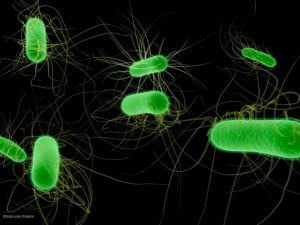Canadian researchers have adapted a litmus paper test to find bacteria such as E. coli. Each year, about 265,000 Americans are diagnosed with E.coli infections which happen when people ingest microscopic amounts of human or animal feces. This can happen from eating food that is contaminated, drinking unpasteurized milk or juice, drinking water that has not been disinfected, or having contact with animals.
 Researchers Yingfu Li and Kha Tram said they wanted to make testing kits that used a simple technology everyone could operate. The litmus paper test allows results to be seen with the naked eye. The yellow paper turns dark blue in the presence of E.coli.
Researchers Yingfu Li and Kha Tram said they wanted to make testing kits that used a simple technology everyone could operate. The litmus paper test allows results to be seen with the naked eye. The yellow paper turns dark blue in the presence of E.coli.
The researchers say they are excited to expand the technology to include the detection of other pathogens and to adapt it for use in other fields such as genetics and cancer testing. Their work was published in the chemistry journal Angewandte Chemie.
Every year, about 265,000 Americans are diagnosed with E.coli infections. These infections happen when people ingest microscopic amounts of human or animal feces. This can happen from eating food that is contaminated by a food handler with poor hygiene, eating undercooked meat, drinking unpasteurized milk or juice, drinking water that has not been disinfected, or having contact with animals.





Please list the sensitivity, specificity and false negatives and positives, so one can judge the worth of this test.
Thank you.
Paul Richter MD
You can see details of their work in Angewandte Chemie, the journal where the study was published.